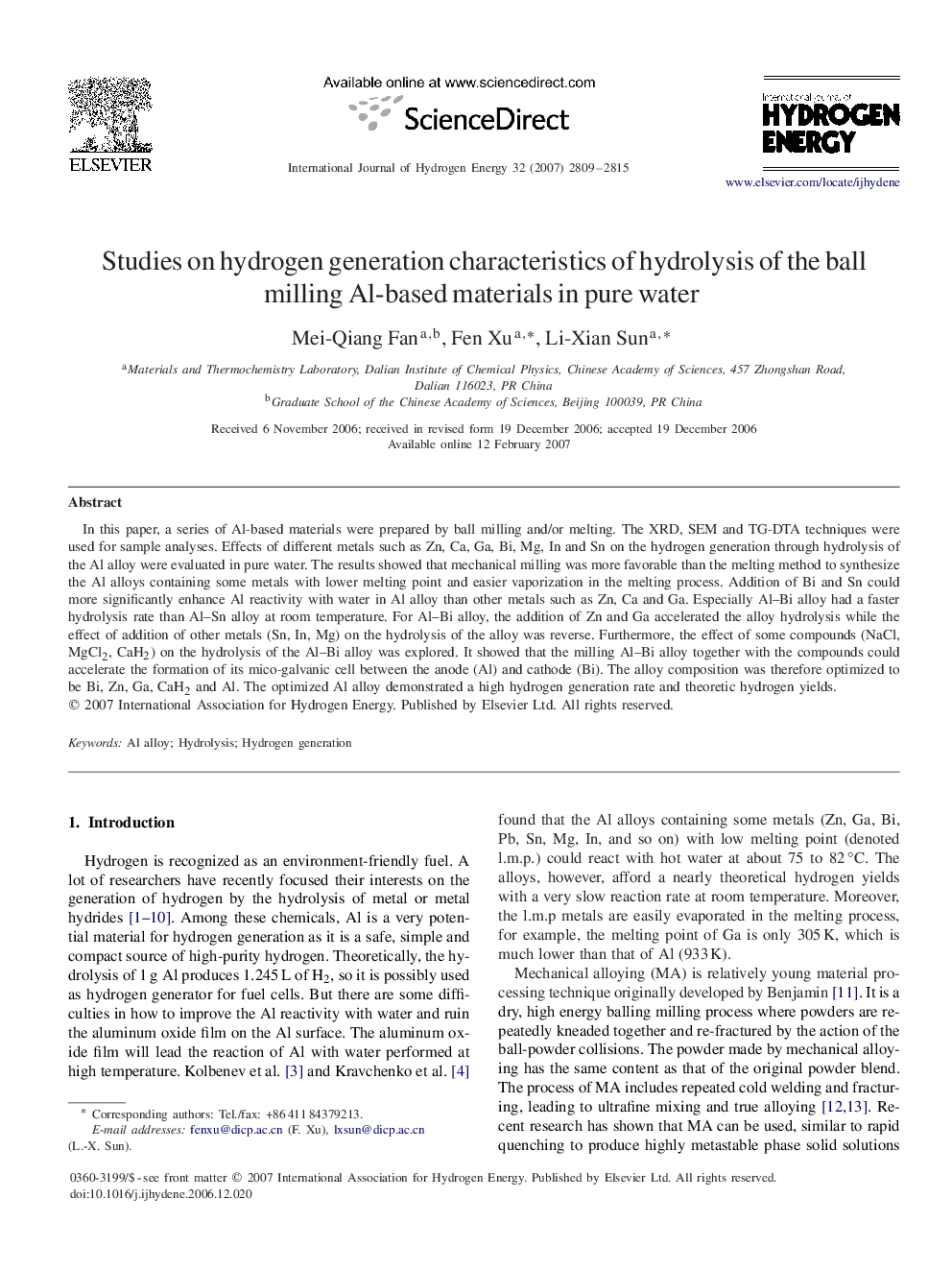| Article ID | Journal | Published Year | Pages | File Type |
|---|---|---|---|---|
| 1280180 | International Journal of Hydrogen Energy | 2007 | 7 Pages |
In this paper, a series of Al-based materials were prepared by ball milling and/or melting. The XRD, SEM and TG-DTA techniques were used for sample analyses. Effects of different metals such as Zn, Ca, Ga, Bi, Mg, In and Sn on the hydrogen generation through hydrolysis of the Al alloy were evaluated in pure water. The results showed that mechanical milling was more favorable than the melting method to synthesize the Al alloys containing some metals with lower melting point and easier vaporization in the melting process. Addition of Bi and Sn could more significantly enhance Al reactivity with water in Al alloy than other metals such as Zn, Ca and Ga. Especially Al–Bi alloy had a faster hydrolysis rate than Al–Sn alloy at room temperature. For Al–Bi alloy, the addition of Zn and Ga accelerated the alloy hydrolysis while the effect of addition of other metals (Sn, In, Mg) on the hydrolysis of the alloy was reverse. Furthermore, the effect of some compounds (NaCl, MgCl2MgCl2, CaH2CaH2) on the hydrolysis of the Al–Bi alloy was explored. It showed that the milling Al–Bi alloy together with the compounds could accelerate the formation of its mico-galvanic cell between the anode (Al) and cathode (Bi). The alloy composition was therefore optimized to be Bi, Zn, Ga, CaH2CaH2 and Al. The optimized Al alloy demonstrated a high hydrogen generation rate and theoretic hydrogen yields.
